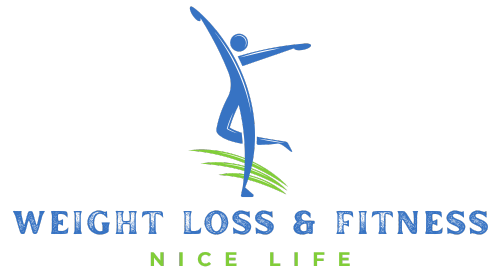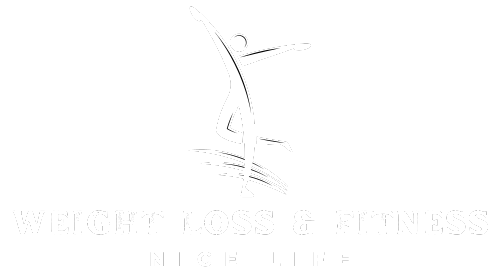In the context of a whey protein diet plan for weight loss, leveraging these benefits can lead to more effective and sustainable results.
Whey protein, obtained from milk through the cheese-making process, is a superior protein. It encompasses all the crucial amino acids, rendering it a comprehensive protein source.
Whey protein exists in two main forms: whey protein concentrate and whey protein isolate. Concentrates contain a slightly higher amount of fats and carbohydrates, while isolates are more refined and contain a higher protein content.
Whey protein is known for its rapid digestion and absorption, making it an ideal choice for post-workout recovery.
Protein plays a crucial role in weight loss due to several reasons:
1. Thermic Effect of Food: Protein has a higher thermic effect compared to fats and carbohydrates, meaning that the body expends more energy to digest and process protein-rich foods, aiding in calorie expenditure.
2. Satiety and Appetite Regulation: Protein-rich meals increase feelings of fullness and reduce hunger, which can lead to reduced calorie intake and better adherence to a weight loss plan.
3. Muscle Preservation: During weight loss, the body may break down muscle tissue for energy. Sufficient protein intake helps preserve lean muscle mass, which is important for maintaining metabolism and achieving a toned appearance.
4. Increased Metabolic Rate: Protein consumption can temporarily boost the metabolic rate due to the energy required for digestion and nutrient processing.
5. Nutrient Partitioning: Protein supports the preferential use of stored fat for energy while preserving muscle tissue, contributing to fat loss and body composition improvements.
I. Understanding the Basics of Weight Loss

A. Caloric Deficit: Key Principle for Weight Loss
The foundation of weight loss revolves around the concept of a caloric deficit, where the number of calories expended through daily activities and bodily functions exceeds the number of calories consumed from food and beverages.
This deficit prompts the body to tap into its stored energy reserves, primarily fat, resulting in weight loss over time.
A balanced caloric deficit, achieved through a combination of reduced calorie intake and increased physical activity, is essential for sustainable and healthy weight loss.
B. Role of Macronutrients in Weight Loss
1. Protein’s Impact on Metabolism and Satiety
Protein’s unique role in weight loss extends beyond its caloric value. Adequate protein intake supports a higher resting metabolic rate due to the energy needed for digestion and absorption.
Additionally, protein enhances satiety by triggering the release of hormones that signal fullness to the brain.
This helps control appetite and reduces the likelihood of overeating, making it easier to maintain a caloric deficit.
2. Carbohydrates and Fats in a Balanced Diet
Carbohydrates and fats are also integral macronutrients in a balanced diet, each serving specific purposes:
- a. Carbohydrates: Carbs are the body’s primary energy source. Complex carbohydrates, such as whole grains, fruits, and vegetables, provide sustained energy and essential nutrients. Balancing carbohydrate intake helps regulate blood sugar levels and prevents energy crashes, contributing to overall well-being during weight loss.
- b. Fats: Dietary fats are vital for hormone production, cellular function, and the absorption of fat-soluble vitamins. Incorporating healthy fats, such as those found in avocados, nuts, and olive oil, supports overall health and can enhance feelings of satisfaction in meals.
II. Whey Protein: Benefits and Role in Weight Loss

A. High-Quality Protein Source
Whey protein stands out as a high-quality protein source due to its amino acid profile and quick absorption.
Being a complete protein, it provides all essential amino acids required for various bodily functions.
This makes it an excellent choice for individuals seeking to increase their protein intake while minimizing the consumption of unnecessary fats and carbohydrates.
B. Muscle Preservation During Weight Loss
Maintaining muscle mass is crucial during weight loss, as muscle tissue contributes to a higher resting metabolic rate.
Whey protein’s amino acids, particularly leucine, play a pivotal role in stimulating muscle protein synthesis and minimizing muscle breakdown.
Incorporating whey protein into a weight loss diet can help preserve lean muscle mass even in a calorie deficit, supporting overall body composition improvements.
C. Enhanced Satiety and Reduced Cravings
Whey protein has been shown to promote feelings of fullness and satiety. Consuming whey protein triggers the release of hormones that signal the brain that you are full, reducing the likelihood of overeating.
Additionally, the sustained satiety provided by whey protein can help control cravings, making it easier to adhere to a reduced-calorie diet.
D. Potential Metabolic Benefits
Whey protein consumption may offer metabolic advantages:
- Thermic Effect: The thermic effect of protein requires the body to expend more energy during digestion and absorption. Whey protein’s thermic effect can contribute to increased calorie expenditure.
- Fat Oxidation: Some research suggests that whey protein may enhance the utilization of stored fats for energy, supporting fat loss.
- Insulin Sensitivity: Whey protein consumption could potentially improve insulin sensitivity, which is important for maintaining stable blood sugar levels and reducing the risk of fat storage.
Incorporating whey protein into a weight loss plan takes advantage of these benefits, aiding in the preservation of muscle mass, the regulation of appetite, and potential metabolic enhancements.
However, it’s important to remember that whey protein is not a magic solution on its own. It should be integrated into a well-balanced diet and combined with regular physical activity for the most effective and sustainable weight loss results.
III. Designing an Effective Whey Protein Diet Plan
A. Determining Individual Protein Requirements
Crafting a successful whey protein diet plan for weight loss begins with assessing individual protein needs.
Factors such as age, gender, activity level, and goals influence the ideal protein intake. A general guideline suggests around 0.8 to 1.2 grams of protein per kilogram of body weight daily.
However, those pursuing weight loss and muscle preservation may lean towards the higher end of this range. Seeking advice from a healthcare professional or a registered dietitian can offer tailored guidance.
B. Incorporating Whey Protein into Meals and Snacks
1. Pre-workout and Post-workout Shakes
Whey protein’s rapid digestion makes it an excellent choice for pre- and post-workout nutrition.
A whey protein shake consumed before a workout can provide readily available amino acids for energy and muscle support.
Similarly, a post-workout shake aids in muscle recovery by delivering protein when the body’s protein synthesis is heightened.
2. Whey Protein in Breakfast, Lunch, and Dinner
Including whey protein in regular meals enhances overall protein intake. Breakfast options like smoothies, oatmeal, or Greek yogurt with whey protein can kickstart the day with sustained energy.
Lunch and dinner can feature lean protein sources supplemented by whey protein, enhancing the protein content of dishes like salads, stir-fries, and soups.
C. Balancing Macronutrient Intake
While whey protein is a valuable component, it’s crucial to maintain a balanced intake of carbohydrates and fats as well.
Carbohydrates provide energy for workouts and daily activities, and healthy fats support various bodily functions.
Crafting meals that incorporate complex carbohydrates, healthy fats, and ample protein creates a well-rounded and satisfying diet plan.
IV. Sample Whey Protein Diet Plan for Weight Loss
A. Breakfast Options with Whey Protein
- Whey Protein Smoothie: Blend whey protein powder with unsweetened almond milk, spinach, frozen berries, and a tablespoon of nut butter for a nutritious and protein-rich start to the day.
- Greek Yogurt Parfait: Layer Greek yogurt, whey protein, granola, and fresh fruits for a satisfying and protein-packed breakfast.
B. Lunch Ideas Featuring Whey Protein
- Grilled Chicken Salad: Toss grilled chicken breast, mixed greens, cherry tomatoes, cucumbers, and a vinaigrette dressing. Sprinkle whey protein powder over the salad for an extra protein boost.
- Quinoa and Black Bean Bowl: Combine cooked quinoa, black beans, roasted vegetables, and a sprinkle of shredded cheese and whey protein for a well-rounded and filling lunch.
C. Snack Choices for Mid-Day Cravings
- Protein-Packed Trail Mix: Mix almonds, pumpkin seeds, dried cranberries, and a handful of whey protein crisps for a crunchy and satisfying snack.
- Cottage Cheese Delight: Top low-fat cottage cheese with sliced fruits, a drizzle of honey, and a scoop of whey protein powder for a balanced and protein-rich snack.
D. Dinner Recipes Incorporating Whey Protein
- Stir-Fry Delight: Sauté lean chicken or tofu with a variety of colorful vegetables. Add a soy-based sauce and a sprinkle of whey protein powder for an extra protein punch.
- Zucchini Noodles with Pesto: Spiralize zucchini into noodles and toss with homemade pesto, cherry tomatoes, and cooked shrimp. Mix in a bit of whey protein for added nutrition.
E. Proper Hydration Throughout the Day
Maintaining proper hydration is essential for both general well-being and achieving weight loss goals. Aim to drink plenty of water throughout the day.
You can also enhance hydration with infused water by adding slices of citrus fruits, berries, or herbs for a refreshing twist.
V. Combining Whey Protein Diet with Exercise
A. Importance of Regular Physical Activity
Incorporating regular physical activity into a whey protein diet plan for weight loss is essential for achieving optimal losing weight results.
Exercise not only burns calories but also supports overall health, enhances mood, and helps build lean muscle mass.
Engaging in a combination of aerobic exercises (cardio) and strength training can create a well-rounded fitness routine that complements your dietary efforts.
B. Synergy Between Protein Intake and Exercise
The combination of a whey protein diet and exercise can yield synergistic benefits:
- Muscle Recovery: Protein intake, especially from sources like whey, aids in muscle repair and recovery after workouts, reducing muscle soreness and supporting future exercise sessions.
- Muscle Building: Strength training exercises combined with sufficient protein intake help build and maintain lean muscle mass, contributing to a toned appearance and a higher resting metabolic rate.
- Fat Loss: The combined effects of increased protein intake and regular exercise promote fat loss while preserving muscle mass, leading to improved body composition.
C. Recommended Types of Exercises for Weight Loss
- Cardiovascular Exercises: Activities like jogging, cycling, swimming, and brisk walking elevate heart rate and burn calories. Cardiovascular exercises are effective for burning fat and improving cardiovascular health.
- High-Intensity Interval Training (HIIT): HIIT encompasses brief bursts of vigorous exercise succeeded by short rest intervals. It can enhance calorie burning and metabolic rate, making it an efficient option for weight loss.
- Strength Training: Incorporating resistance exercises using weights, resistance bands, or bodyweight helps build and maintain lean muscle mass. More muscle means a higher resting metabolic rate, which supports weight loss.
- Flexibility and Mobility Work: Activities like yoga and stretching improve flexibility, reduce the risk of injury, and promote overall well-being.
Striking a balance between different types of exercises allows for a comprehensive approach to fitness.
It’s important to choose exercises that align with your preferences, fitness level, and any potential health considerations.
As you engage in physical activity, your whey protein intake supports your body’s recovery and growth needs, ensuring that you’re fueling your efforts to achieve your weight loss and fitness goals.
VI. Monitoring Progress and Making Adjustments
A. Tracking Weight Loss and Body Composition Changes
Monitoring your weight loss journey involves more than just stepping on a scale. While tracking your weight is important, it’s equally valuable to keep tabs on other metrics like body measurements, body fat percentage, and how your clothes fit.
These measures provide a more comprehensive view of your progress and can help you understand changes in your body composition.
B. Evaluating Adherence to the Diet Plan
Regularly assessing your adherence to the whey protein diet plan for weight loss is crucial. Reflect on your eating habits, portion sizes, and consistency in consuming protein-rich foods.
Honest self-evaluation helps you identify areas where you might need to improve, ensuring that you’re staying on track toward your weight loss goals.
C. Modifying the Diet Plan as Needed
While advancing through your weight loss expedition, your dietary requirements might undergo alterations.
If you find that you’re not achieving the desired results, or if your energy levels are low, consider making adjustments to your diet plan.
This might involve recalibrating your calorie intake, adjusting macronutrient ratios, or experimenting with different meal timings.
Regular modifications keep your plan dynamic and aligned with your evolving needs.
VII. Potential Considerations and Precautions
A. Individual Allergies or Sensitivities to Whey
Before embarking on a whey protein diet plan for weight loss, it’s important to be aware of any allergies or sensitivities you may have to dairy or whey.
Certain individuals might encounter digestive unease, bloating, or allergic responses upon consuming whey protein.
If you suspect an allergy or sensitivity, consider opting for alternative protein sources such as plant-based options like pea protein, soy protein, or rice protein.
B. Consulting with a Healthcare Professional Before Starting
Prior to beginning any significant dietary change, especially if you have underlying health conditions or are on medication, it’s advisable to consult a healthcare professional.
They can provide personalized guidance based on your individual health needs, ensuring that the whey protein diet plan for weight loss is safe and suitable for you.
C. Long-Term Sustainability of the Diet Plan
While whey protein can be a valuable component of a weight loss plan, it’s important to consider the long-term sustainability of the diet.
Rapid weight loss approaches or extreme restrictions can be challenging to maintain over time, potentially leading to rebound weight gain.
Focus on developing healthy eating habits that you can continue beyond the initial weight loss phase.
This might involve gradually transitioning from a more structured plan to a balanced and intuitive approach to eating.
Additionally, ensure that your diet plan provides adequate variety and meets your nutritional needs.
Relying solely on whey protein supplements for an extended period may result in nutrient imbalances or deficiencies.
Incorporating a diverse range of whole foods into your diet helps ensure you’re getting essential vitamins, minerals, and other nutrients.
VIII. Frequently Asked Questions about Whey Protein and Weight Loss
A. Can Whey Protein Help with Muscle Building?
Yes, whey protein is a valuable tool for muscle building. Its rich amino acid profile, particularly its high content of branched-chain amino acids (BCAAs) like leucine, supports muscle protein synthesis.
This process is essential for repairing and building muscle tissue, making whey protein a popular choice among athletes, bodybuilders, and individuals seeking to improve their muscle mass and strength.
B. Is Whey Protein Suitable for Vegetarians?
Whey protein is derived from milk, which makes it unsuitable for strict vegetarians (vegans) or individuals who are lactose intolerant.
However, there are plant-based protein alternatives such as pea protein, soy protein, and rice protein that can be viable options for vegetarians.
If you’re looking for a vegetarian-friendly protein source, explore these alternatives to fulfill your dietary needs.
C. How Does Whey Protein Compare to Other Protein Sources?
Whey protein is highly regarded due to its exceptional amino acid profile and rapid absorption rate. It possesses all the necessary amino acids, rendering it a comprehensive source of protein.
Compared to other protein sources like plant-based proteins, whey protein has a higher biological value, meaning it is more efficiently utilized by the body for muscle growth and repair.
However, the choice between whey protein and other sources depends on individual preferences, dietary restrictions, and goals.
D. Can Excessive Whey Protein Consumption Be Harmful?
While whey protein can offer various benefits, consuming excessive amounts is not recommended. Very high protein intake, regardless of the source, can put strain on the kidneys and liver.
Additionally, excessive protein consumption might lead to digestive discomfort, bloating, or an imbalance in other nutrients. Moderation is key.
It’s important to calculate your protein needs based on your goals and consult a healthcare professional or registered dietitian for personalized guidance.
As with any dietary choices, understanding the specifics of whey protein and its role in your weight loss journey is essential.
Addressing these frequently asked questions provides clarity and helps you make informed decisions about incorporating whey protein into your diet plan.
IX. Conclusion
A. Recap of the Benefits of a Whey Protein Diet Plan for Weight Loss
A whey protein diet plan offers a range of benefits that can support your weight loss journey:
- High-Quality Protein: Whey protein provides essential amino acids that promote muscle recovery and growth.
- Satiety and Appetite Control: Protein-rich meals help manage hunger and reduce overeating.
- Muscle Preservation: Adequate protein intake supports lean muscle mass, crucial for a healthy metabolism.
- Metabolic Boost: The thermic effect of protein contributes to increased calorie expenditure.
- Nutrient Partitioning: Protein aids in utilizing stored fats for energy while sparing muscle tissue.
B. Emphasis on the Importance of Personalized Approaches
While the benefits of a whey protein diet plan for weight loss are clear, it’s essential to remember that every individual is unique. What is successful for one individual may not be effective for another.
Personalized factors such as dietary preferences, allergies, activity levels, and health conditions must be considered when designing a successful weight loss strategy.
Tailoring your approach ensures that you’re addressing your specific needs and setting yourself up for sustainable success.
C. Strong Recommendation to Seek Expert Guidance Prior to Implementing Major Dietary Alterations
Before embarking on any significant dietary changes, particularly those involving protein supplementation or weight loss, it’s strongly advised to consult healthcare professionals or registered dietitians.
Their expertise can guide you in creating a well-rounded plan that aligns with your goals while safeguarding your health.
Professionals can provide insights, monitor your progress, and make necessary adjustments based on your individual circumstances.
In closing, a whey protein diet plan can be a valuable tool on your weight loss journey, offering benefits that enhance muscle preservation, appetite control, and metabolic function.
However, success hinges on a holistic approach that combines proper nutrition, regular exercise, and expert guidance.
Remember that the road to weight loss is a gradual and individualized process, and with the right resources, support, and determination, you can achieve your desired outcomes and maintain a healthier lifestyle.













No Comments